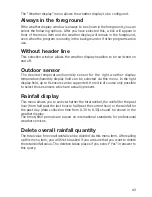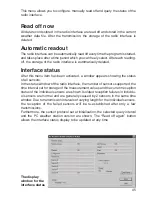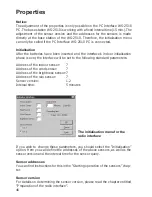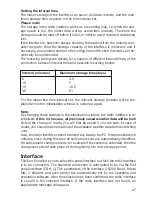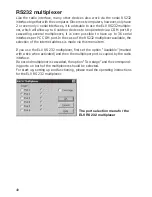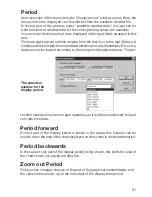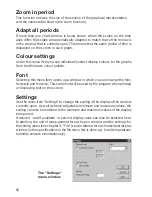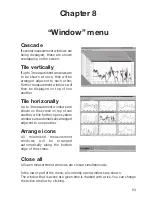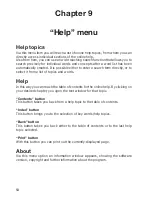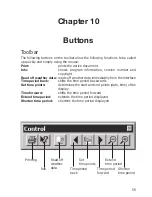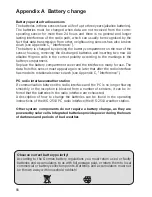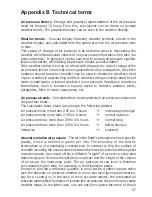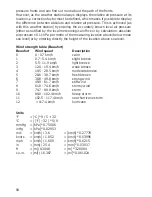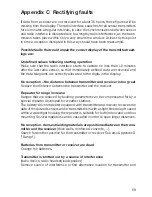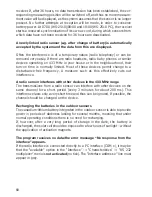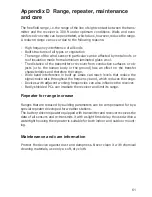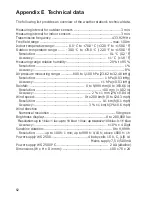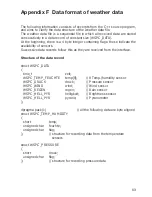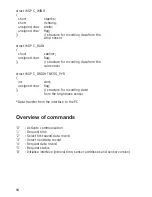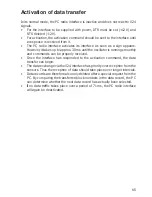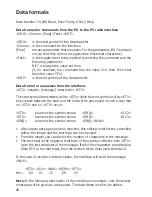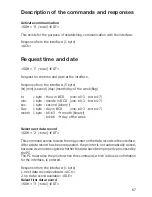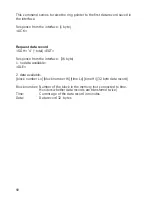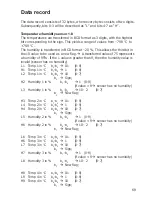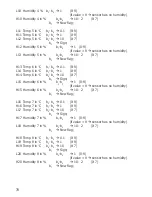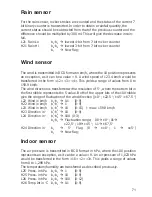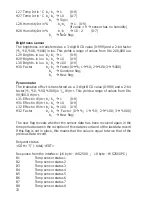
57
Appendix B Technical terms
Air pressure history
- Storage and graphical representation of the air pressure
trend for the past 72 hours. From this, conclusions can be drawn on general
weather trends. The graphical display can be seen in the weather display.
Weather trends
- forecast display featuring weather symbols, shown in the
weather display, and calculated from the speed at which the air pressure rises
or falls.
This speed of change of air pressure is an essential value in forecasting the
weather, while the absolute value is of only secondary importance. See also “Air
pressure trends”. In general it can be said that increasing air pressure signifies
improved weather, while falling air pressure means poorer weather.
If the weather station is set up on a boat with a laptop, the rate of change of the
air pressure (which can mostly be recognised from the cloud pattern, which the
boatman should be able to identify) may be used to determine whether a front
of poor weather is approaching and thus whether sailing over large stretches of
water is inadvisable or indeed whether it is necessary to head back to harbour
immediately. Such a forecast is equally useful to farmers, amateur pilots,
paragliders, fliers of model aeroplanes, etc.
Air pressure trends
- Calculated from developments in air pressure values over
the past few hours.
The calculation takes place according to the following pattern:
Air pressure rises more than 2 hPa in 3 hours
->
increasingly strongly
Air pressure rises more than 2 hPa in 6 hours
->
normal increase
Air pressure drops more than 2 hPa in 6 hours
->
normal drop
Air pressure drops more than 2 hPa in 3 hours
->
falling strongly
otherwise
->
constant
Absolute/relative air pressure
- The air in the Earth’s atmosphere has a specific
gravity, which is defined in grams per litre. The boundary of the Earth’s
atmosphere is of a (relatively) constant size. In contrast to this, the surface of
the earth including the oceans varies between the lowest sea level and the highest
mountain peaks. As a result of this, a different “weight“ of air acts on every area
depending upon the mean height above sea level and the height of the column
of air above the measuring point. The air pressure at sea level is therefore
considerably higher than, for example, in the Himalayan peaks.
In order to provide a reference quantity, in most cases, weather reports either
give the absolute air pressure referred to mean sea level (general information,
say for a country) or, in the case of more accurate reports, the graduated air
pressure represented by means of isobars (the air pressure lines on more accurate
weather maps). In the latter case, one can easily recognise the trend of the air
Содержание WS-2510
Страница 3: ...3 ...
Страница 9: ...9 Chapter 1 Introduction ...
Страница 16: ...16 ...
Страница 17: ...17 Chapter 2 Starting operation ...
Страница 28: ...28 Chapter 3 File menu ...
Страница 36: ...36 Chapter 4 Display menu ...
Страница 42: ...42 Chapter 5 Weather display menu ...
Страница 44: ...44 Chapter 6 Interface menu ...
Страница 49: ...49 ...
Страница 50: ...50 Chapter 7 View menu ...
Страница 75: ...75 ...

